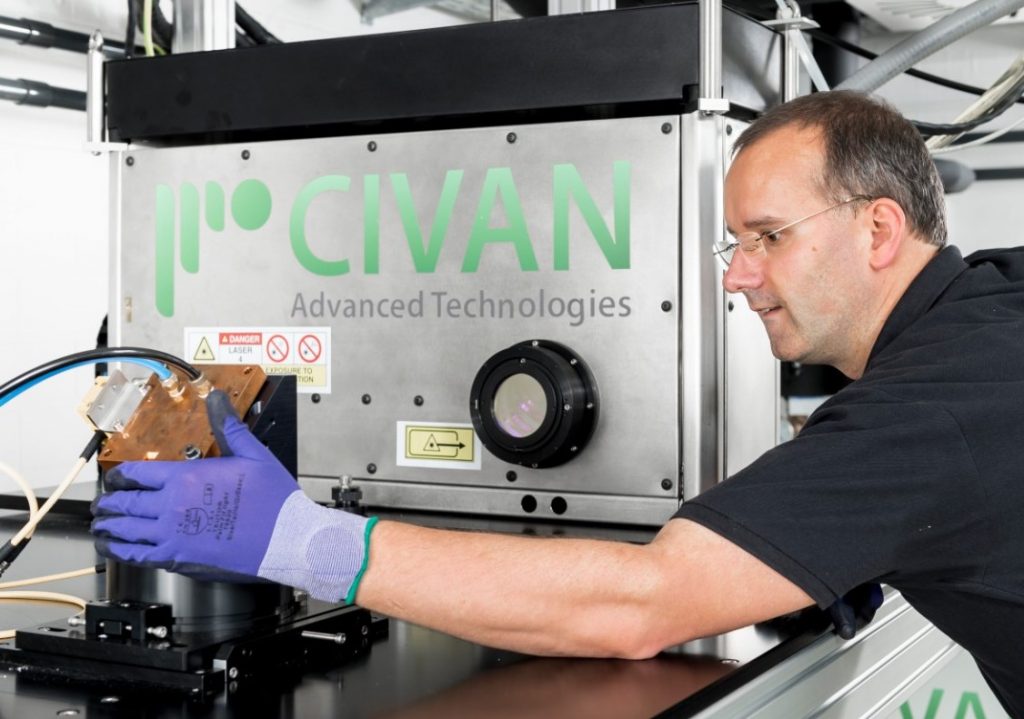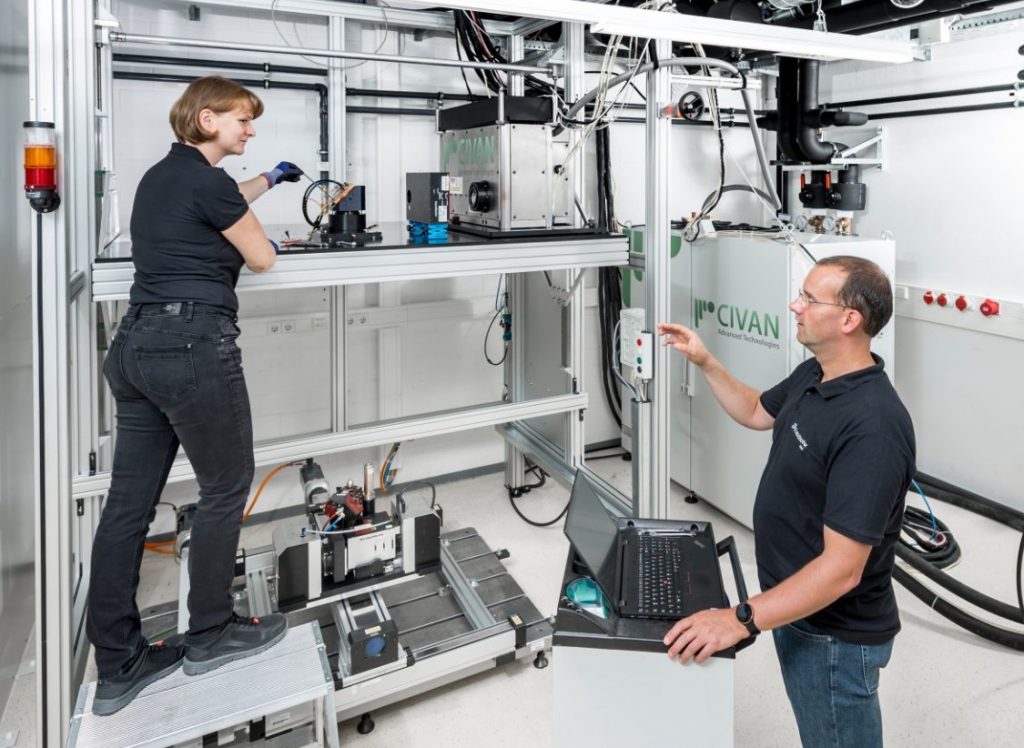German research institute Fraunhofer IWS has revealed that it’s testing a 3D printing system that could be up to “a thousand times faster” than current mirror-based laser manufacturing technologies.
Built around a high-powered 13 KW ‘Dynamic Beam Laser,’ the institute’s setup is said to be capable of rapidly generating different energy distribution patterns, and precisely printing the most demanding of materials. According to Fraunhofer IWS’ Andreas Wetzig, the technology “pushes the limits” of metal 3D printing, unlocking new alloys for use within the medical, electromobility and aerospace sectors.
Perfecting ‘CBC 3D printing’
Developed initially by Israeli firm Civan Lasers, Fraunhofer IWS’ newly-installed setup is essentially a form of Coherent Beam Combining or ‘CBC’ 3D printing. Considered to be the ‘holy grail’ of high-powered laser processes, the approach involves splitting a laser into amplifiers to create multiple coherent rays, before merging them into a powerful single beam.
In Civan Lasers’ case, the firm has developed a means of using small phase shifts in partial beams, to modulate their energy distribution patterns. Compared to existing lasers, which release most of their energy at their beam’s center, the Dynamic Beam Laser is therefore able to pattern parts into complex ‘rings’ or ‘horseshoe’ shapes.
Theoretically, this was already possible using beam-deflecting optics or fast oscillating mirrors, albeit while taking a few milliseconds to realign each time. However, Civan Lasers’ approach is quicker, enabling a laser’s energy patterns to be adjusted in microseconds, thus it potentially allows dynamic beam shaping to be used within industrial-scale metal 3D printing for the very first time.

Fraunhofer IWS and ‘ShapeAM’
As part of the ‘ShapeAM’ project, a component of the wider EU-backed ‘M-era.Net’ program, Civan Lasers has now installed its new self-named ‘CIVAN’ system at Fraunhofer IWS’ Dresden facility. Working with colleagues at welding specialist Laser Welding Solutions, the ShapeAM team says that it ultimately aims to develop titanium and aluminum 3D printed parts with “improved material properties.”
Specifically, the researchers intend to use dynamic beam shaping to eliminate component defects and overcome many of the existing challenges presented by crack-sensitive materials. In doing so, the team believes that it could also be possible to create metal parts with application-specific qualities, which are tailored to perform in outer space for instance, or implants with enhanced biocompatibility.
To gauge the capabilities of the Dynamic Beam Laser, experts at Fraunhofer IWS and Civan Lasers first plan to carry out basic tests on beam profiles and materials, before attempting to identify its end-use applications by assessing how well it can cut, join or 3D print various objects from alloys that are usually difficult to process.
Although the project only started in July 2021, Fraunhofer IWS has already predicted that the CIVAN will provide “faster and more precise control” over melt pool dynamics during 3D printing. In other areas, the institute also anticipates that the Dynamic Beam Laser will prove to be twice as quick as current fiber lasers when it comes to laser cutting, while yielding burr-free cuts with excellent edge quality.
On September 14 2021, Fraunhofer IWS is set to hold a webinar, in which it’ll delve deeper into its experiments with potential industry and research partners, and those interested in testing the technology will be invited to use the CBC laser for their own applications, under the proviso that any subsequent findings will be presented at the Laser Symposium and ISAM 2021 from December 7-9 2021.

High-powered laser 3D printing
Unlike the CBC-based system being trialled at Fraunhofer IWS, many current metal 3D printers are limited to using single-mode 10 KW lasers. To get around this, manufacturers are increasingly fitting their printers with multiple high-powered lasers and large build volumes, to create mammoth machines with potential applications on an industrial scale.
With this in mind, SLM Solutions unveiled its powerful new NXG XII 600 3D printer at Formnext Connect last year. Packing twelve 1 KW lasers, the system is specifically designed to mass produce large-format parts for those operating in automotive or aerospace, and it has already attracted the interest of “major European OEMs.”
Likewise, Farsoon Technologies launched a new Powder Bed Fusion (PBF) 3D printer at TCT Asia 2021, which features no less than eight 1000W lasers. Available in two setups, including the ‘FS721M-8’ and scaled-down ‘FS721M’ versions, Farsoon’s system is built to allow users to cost-efficiently ramp up their metal 3D printing operations, providing particular automotive, tooling and industrial opportunities.
The nominations for the 2021 3D Printing Industry Awards are now open. Who do you think should make the shortlists for this year’s show? Have your say now.
To stay up to date with the latest 3D printing news, don’t forget to subscribe to the 3D Printing Industry newsletter or follow us on Twitter or liking our page on Facebook.
For a deeper-dive into additive manufacturing, you can now subscribe to our Youtube channel, featuring discussion, de-briefs and shots of 3D printing in-action.
Are you looking for a job in the additive manufacturing industry? Visit 3D Printing Jobs for a selection of roles in the industry.
Featured image shows an engineer installing Civan Laser’s ‘Dynamic Beam Laser’ at Fraunhofer IWS’ facility in Dresden. Photo via Fraunhofer IWS.



